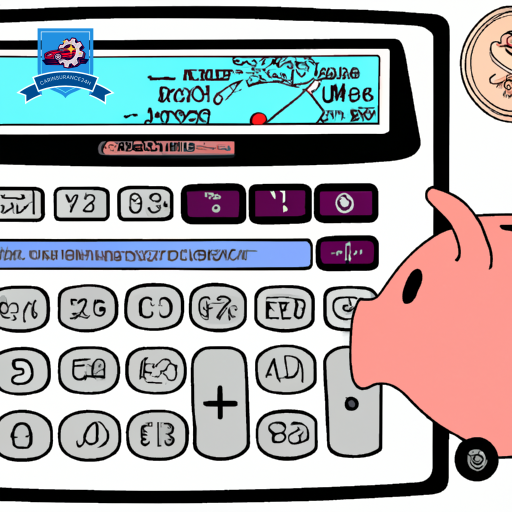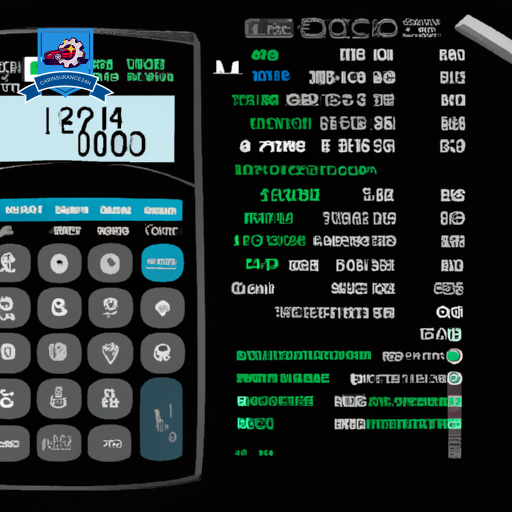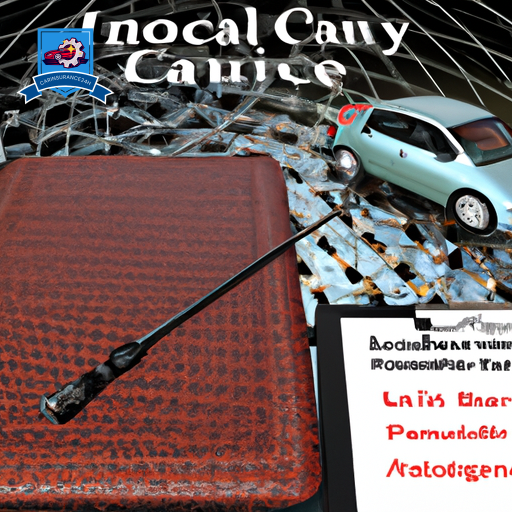In an era where customization is key in service delivery, pay-per-mile car insurance emerges as a significant innovation, tailoring costs to individual driving patterns. This insurance model operates on a straightforward principle: policyholders pay a base rate plus a variable fee determined by the number of miles driven.
Such a structure inherently appeals to low-mileage drivers by potentially lowering their insurance costs. However, understanding the nuances of premium calculation, the technology used for tracking mileage, and the implications for personal privacy are essential.
As we explore the intricacies of pay-per-mile insurance, one might ponder the broader question: does this model mark a shift towards more personalized and equitable insurance policies?
The Basics of Pay-Per-Mile

Pay-per-mile car insurance fundamentally charges drivers based on the exact number of miles they drive, offering a potentially cost-effective solution for low-mileage drivers. This innovative insurance model diverges from traditional policies by focusing on the distance traveled rather than just the time covered. It caters specifically to those who use their vehicle infrequently, whether it’s for weekend drives, errands around town, or as a secondary mode of transport.
Unlike standard insurance models that charge a flat premium regardless of the vehicle’s usage, pay-per-mile policies align the cost directly with the amount of driving. This structure inherently offers several policy advantages. For one, it introduces a fair pricing mechanism, ensuring that drivers only pay for what they use. This can lead to substantial savings for those who drive less, making insurance costs more predictable and manageable.
Another advantage is the encouragement of less driving. By directly linking cost to mileage, there’s a financial incentive to drive less, which could lead to safer roads and a reduction in traffic congestion and emissions. Additionally, this model offers transparent billing, where drivers can easily track their driving habits and associated costs, fostering a more conscious approach to driving and spending.
How Premiums Are Calculated

Understanding how premiums are calculated in pay-per-mile car insurance is important for potential policyholders.
This calculation involves various factors including mileage tracking methods, the determination of the base rate, and the assessment of variable cost elements.
Each of these components plays an important role in the final premium, reflecting the unique driving habits and risks of the insured.
Mileage Tracking Methods
How do insurers accurately track mileage to calculate premiums in pay-per-mile car insurance policies?
With advancements in technology, insurers have developed various methods to measure how much policyholders drive. However, these methods raise privacy concerns and questions about technology reliability. Here are the key methods used:
- Plug-in Devices: Devices that connect to the car’s onboard diagnostics port.
- Smartphone Apps: Applications that use GPS to track miles driven.
- Built-in Telematics: Systems pre-installed in newer vehicles that transmit data directly.
- Manual Reporting: Policyholders report odometer readings periodically.
- RFID Tags: Tags that communicate with reader stations for toll collection and mileage tracking.
Each method balances the need for accurate data collection with the importance of maintaining user privacy and ensuring the reliability of the technology used.
Base Rate Factors
While methods for tracking mileage are diverse and sophisticated, determining premiums in pay-per-mile car insurance also involves considering base rate factors. These factors are essential components in calculating the initial part of the insurance cost, which remains fixed regardless of the miles driven.
Two critical base rate factors are the insured’s credit score and geographic location. Insurers consider a good credit score as indicative of responsible behavior, potentially translating to safer driving habits and, consequently, a lower risk of filing claims. This perception might result in more favorable base rates for those with higher credit scores.
Similarly, geographic location plays a significant role. Areas with higher traffic density, increased accident rates, or elevated theft occurrences can lead to higher base rates due to the increased risk of incidents.
Variable Cost Elements
Beyond the fixed base rate, variable cost elements play a pivotal role in determining the total premium of pay-per-mile car insurance, primarily focusing on the actual distance driven. These variable costs are meticulously calculated to guarantee fairness and accuracy in premium assessment.
- Distance Driven: The number of miles covered greatly impacts the premium.
- Driving Behavior: Safe driving can lead to policy discounts, influencing overall costs.
- Vehicle Type: Certain vehicles may incur higher variable costs due to risk factors.
- Location: Geographic factors can affect risk assessment, altering variable expenses.
- Policy Discounts: Available discounts for low-mileage drivers can reduce the variable portion of the premium.
Understanding these elements is essential for consumers aiming to balance their insurance needs with their fixed expenses, making sure they only pay for the coverage they require.
Tracking Your Miles
To accurately calculate premiums, pay-per-mile car insurance providers utilize technology that monitors and records the distance vehicles travel. This system is pivotal for establishing a fair usage-based insurance fee that aligns with the actual mileage covered by the policyholder. Such technology typically involves the installation of a telematics device in the insured vehicle, which then transmits mileage data directly to the insurer. This direct data transmission is critical for mileage fraud prevention, ensuring that the miles reported are a true reflection of the vehicle’s use.
However, the use of tracking technology in pay-per-mile insurance raises privacy concerns among consumers. The apprehension revolves around the extent of data collected and how this information is utilized beyond the scope of mileage tracking. Insurers must thus navigate the fine line between collecting necessary data for accurate billing and respecting the privacy of their policyholders. This involves implementing robust data protection measures and being transparent about what data is collected, how it is used, and who has access to it.
In addition, to address privacy concerns, some insurers offer alternative methods for reporting mileage, such as manual submissions or mobile app-based tracking, which can provide policyholders with more control over their data. Nonetheless, these alternatives must still ensure accuracy and reliability to prevent mileage fraud.
Benefits for Low-Mileage Drivers
For drivers who log fewer miles, pay-per-mile car insurance offers a financially advantageous model that aligns insurance costs more directly with actual vehicle use. This structure not only promotes cost savings but also contributes to reduced wear and tear on the vehicle, extending its lifespan and decreasing the need for frequent repairs.
Cost Savings Explained
One significant advantage of pay-per-mile car insurance is that it presents an opportunity for low-mileage drivers to realize substantial cost savings. This innovative insurance model is particularly beneficial for those who do not use their vehicles extensively, thereby aligning costs more closely with actual vehicle use. The cost savings are not just monetary but also contribute to a broader environmental impact by incentivizing less driving. However, it’s important for consumers to understand the policy limitations that may accompany such plans.
- Direct correlation between driving less and lower insurance premiums
- Encourages environmentally friendly behavior by reducing unnecessary vehicle use
- Customizable policies can better meet individual needs
- Potential reduction in overall transportation costs
- Offers a financially viable alternative for those who primarily use public transportation or other means of commuting
Reduced Wear and Tear
Low-mileage drivers not only benefit from lower insurance premiums but also experience reduced wear and tear on their vehicles, extending their lifespan and saving on maintenance costs. This advantage is especially prominent when considering how driving habits directly influence the need for vehicle maintenance. Less frequent driving results in slower depreciation of car parts, leading to substantial savings over time.
| Aspect of Vehicle Maintenance | Impact of Reduced Driving |
|---|---|
| Engine Wear | Markedly Diminished |
| Tire Replacement | Less Frequent |
| Brake Pad Wear | Decreased |
| Oil Change Frequency | Extended Intervals |
Adopting pay-per-mile insurance not only aligns with economical driving habits but also promotes a culture of vehicle preservation, ensuring that cars remain in better condition for longer periods.
Comparing Traditional Vs. Pay-Per-Mile
Understanding the differences between traditional car insurance policies and pay-per-mile schemes is essential for drivers seeking the most cost-effective coverage. Traditional car insurance typically offers a one-size-fits-all approach, calculating premiums based on various risk factors without directly considering the actual miles driven. Conversely, pay-per-mile insurance tailors costs more closely to an individual’s driving habits, potentially offering substantial savings for low-mileage drivers.
Key distinctions to take into account include:
- Premium Calculation: Traditional policies assess premiums based on risk factors such as age, driving history, and vehicle type. Pay-per-mile insurance, however, adds another layer by incorporating the number of miles driven into the equation, directly linking driving habits to costs.
- Insurance Discounts: While both types of insurance may offer discounts, pay-per-mile schemes often provide clearer pathways to savings for those who drive less, directly rewarding reduced mileage with lower premiums.
- Coverage Limits: Both insurance types offer similar coverage options, including liability, collision, and comprehensive coverage. The primary difference lies in how the premium relates to mileage, not the extent of coverage.
- Flexibility: Traditional insurance premiums are generally fixed for the policy term, while pay-per-mile costs vary with driving activity, offering more flexibility and potential savings for those whose driving habits change.
- Billing Structure: Traditional insurance bills are typically predictable and issued on a monthly or annual basis. Pay-per-mile billing, however, fluctuates based on actual miles driven, introducing a variable component to monthly expenses.
Choosing between traditional and pay-per-mile insurance depends on individual driving patterns, preferences for predictability versus flexibility, and the desire for potential savings through reduced driving.
Adjusting to Your Driving Needs
How can drivers guarantee their car insurance policy best aligns with their individual driving habits and needs? Pay-per-mile car insurance offers a flexible solution by allowing premiums to adjust according to the amount of driving one does. This type of insurance is particularly beneficial for those whose driving habits or geographic location result in less frequent use of their vehicle. Understanding how to tailor this insurance to one’s specific needs can result in more personalized coverage.
| Factor | Consideration for Pay-Per-Mile Insurance | Impact on Insurance Needs |
|---|---|---|
| Driving Habits | Frequency of Use | Less frequent drivers benefit from lower rates |
| Purpose of Driving (commuting, leisure) | Purpose can influence mile usage and cost | |
| Geographic Location | Urban vs. Rural | Urban drivers may drive less but face higher risks; rural drivers might drive longer distances but have lower risk |
| Vehicle Type | Efficiency and Cost of Maintenance | More efficient vehicles might incur lower costs per mile |
Adjusting to your driving needs means evaluating these factors carefully. For example, individuals in urban areas might find pay-per-mile insurance more cost-effective due to the proximity of amenities and as a result, shorter driving distances. Conversely, someone living in a rural area might drive longer distances but could still benefit if their overall mileage remains low.
This personalized approach ensures that drivers are not overpaying for their car insurance but are still adequately covered. The key is to assess one’s driving habits and geographic location accurately to find the most fitting and economical pay-per-mile insurance policy.
Potential Savings Explained
After considering how pay-per-mile insurance can be tailored to individual driving habits and needs, it is equally important to examine the potential financial benefits this type of policy can offer. For drivers who use their vehicle sparingly, moving to a pay-per-mile system can result in substantial savings. This model encourages a more conscious approach to driving, directly linking the amount of driving to the cost of insurance.
To convey a deeper meaning for the audience, consider these key points:
- Direct Cost Control: Drivers have more direct control over their insurance costs. By reducing miles driven, they can directly influence and lower their insurance premiums.
- Customized to Driving Habits: Those with low annual mileage can see significant reductions in their premiums, making insurance costs more proportional to actual vehicle use.
- Insurance Discounts: Additional discounts may be available for safe driving behaviors, which can be tracked through the mileage tracking device, further lowering costs.
- Financial Planning: Easier budgeting and financial planning since insurance costs become more predictable and aligned with driving patterns.
- Environmental Incentives: Encourages less driving, which can not only save money but also contribute to environmental conservation efforts by reducing carbon emissions.
In short, pay-per-mile car insurance offers a pragmatic solution for drivers looking to align their insurance expenses closely with their actual driving habits. The potential savings stem not only from reduced rates for low mileage but also from a broader adoption of safer driving practices encouraged by insurance discounts. This system fosters a more responsible and cost-effective approach to car insurance, appealing to a wide range of drivers seeking flexibility and savings.
Common Misconceptions
Despite its potential benefits, there are several common misconceptions about pay-per-mile car insurance that can deter drivers from considering this option. A prevalent misunderstanding is the belief that opting for pay-per-mile insurance will negatively impact one’s credit score. This concern stems from a confusion between insurance quotes, which may involve a soft credit check, and hard inquiries that can affect credit scores. In reality, the soft inquiries associated with obtaining insurance quotes, including those for pay-per-mile policies, do not affect your credit score. Insurance providers use these soft inquiries to assess risk and determine pricing more accurately, but they are not the same as credit checks for loans or credit card applications.
Another significant misconception concerns accident coverage. Some drivers mistakenly think that pay-per-mile insurance offers less exhaustive accident coverage compared to traditional policies. This is not the case. Pay-per-mile car insurance policies provide the same level of accident coverage as standard insurance policies. The primary difference lies in the billing structure, not the scope of coverage. Whether you drive a few miles or several thousand miles, the insurance coverage in the event of an accident remains consistent, ensuring drivers are fully protected regardless of the distance they travel.
Clarifying these misunderstandings is crucial for drivers who are evaluating their insurance options. Understanding that credit impact is a non-issue and that accident coverage is not compromised can help more drivers see pay-per-mile insurance as a viable and potentially cost-saving alternative to traditional car insurance policies.
Determining If It’s Right for You
Evaluating whether pay-per-mile car insurance aligns with your driving habits and financial goals is a critical step in selecting the most suitable insurance plan. This model can offer substantial savings for certain drivers, but it may not be the best fit for everyone. Understanding your own driving patterns and considering how they mesh with the structure of pay-per-mile insurance is essential.
To determine if pay-per-mile car insurance is the right choice for you, consider the following:
-
Driving Habits: Reflect on your average mileage. If you’re a low-mileage driver, often defined as someone who drives less than 10,000 miles a year, you could stand to benefit significantly from a pay-per-mile plan.
-
Financial Goals: Assess your budgetary constraints and savings goals. If reducing monthly expenses is a priority, pay-per-mile insurance could align well with your financial strategy.
-
Commuting Patterns: Examine how often you use your vehicle for long commutes. Those working from home or with short commutes may find this insurance model particularly advantageous.
-
Coverage Needs: Make sure that the pay-per-mile plan offers the coverage limits you require. While saving on premiums, you shouldn’t compromise on the level of protection you deem necessary.
-
Flexibility and Adjustments: Consider whether your driving habits might change in the near future. The sustainability of savings with pay-per-mile insurance could be influenced by any anticipated increase in driving frequency.
Frequently Asked Questions
How Does Pay-Per-Mile Insurance Impact My Coverage When Driving in Another Country?
Understanding international regulations can be a Herculean task, especially with pay-per-mile insurance. Coverage limitations while driving abroad are pivotal to comprehend, as they greatly dictate the extent of protection available under such policies.
Can Pay-Per-Mile Insurance Policies Be Combined With Other Types of Insurance Discounts, Such as Multi-Car or Safe Driver Discounts?
Yes, pay-per-mile insurance policies can be combined with other discounts, such as multi-car or safe driver incentives. Bundling benefits enhance savings, while discount eligibility varies by provider, optimizing cost-efficiency for diverse driving habits and needs.
How Do Insurance Companies Ensure Privacy and Data Security for the GPS or Mileage Tracking Devices Used in Pay-Per-Mile Insurance?
Insurance companies utilize advanced encryption standards and guarantee device compatibility to safeguard customer data from unauthorized access in mileage tracking devices. These measures are imperative for maintaining privacy and data security in their services.
In the Event of a Car Breakdown or if the Tracking Device Malfunctions, How Does This Affect Billing or Claims Under a Pay-Per-Mile Policy?
In the event of a breakdown or tracking device malfunction, pay-per-mile insurance policies typically feature emergency services and repair partnerships to make sure billing and claims are handled accurately and swiftly, minimizing customer inconvenience and uncertainty.
How Does Switching to Pay-Per-Mile Insurance From a Traditional Policy Affect My Insurance History or Future Rates With Other Insurance Types or Companies?
Switching to pay-per-mile insurance may influence your insurance history through potential credit score impacts and policy cancellation fees. These factors could subsequently affect future rates and eligibility with other insurance types or companies.
















